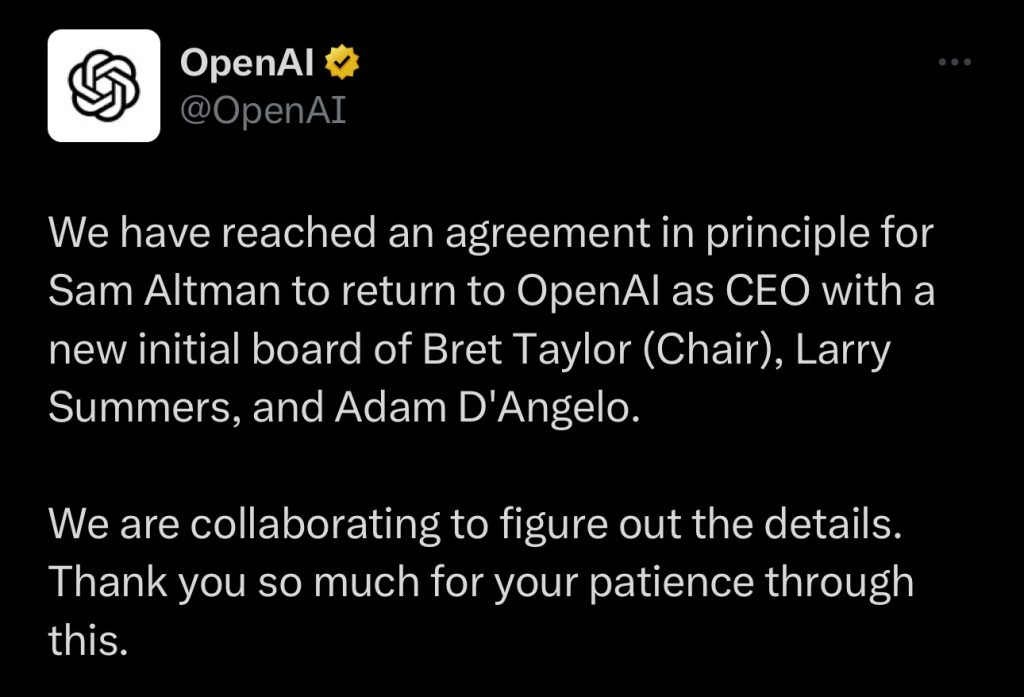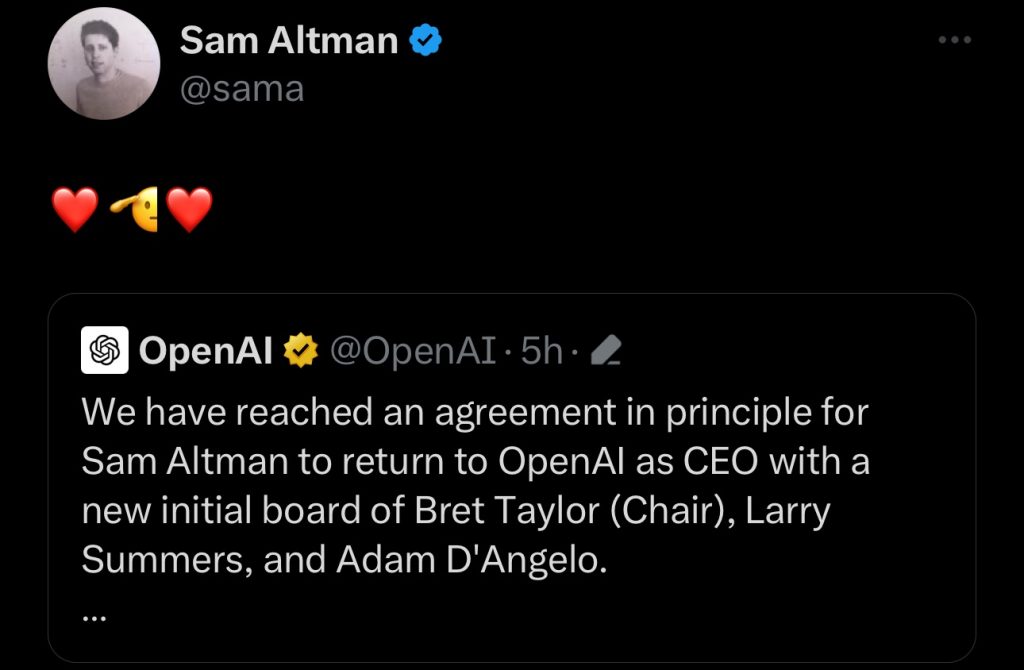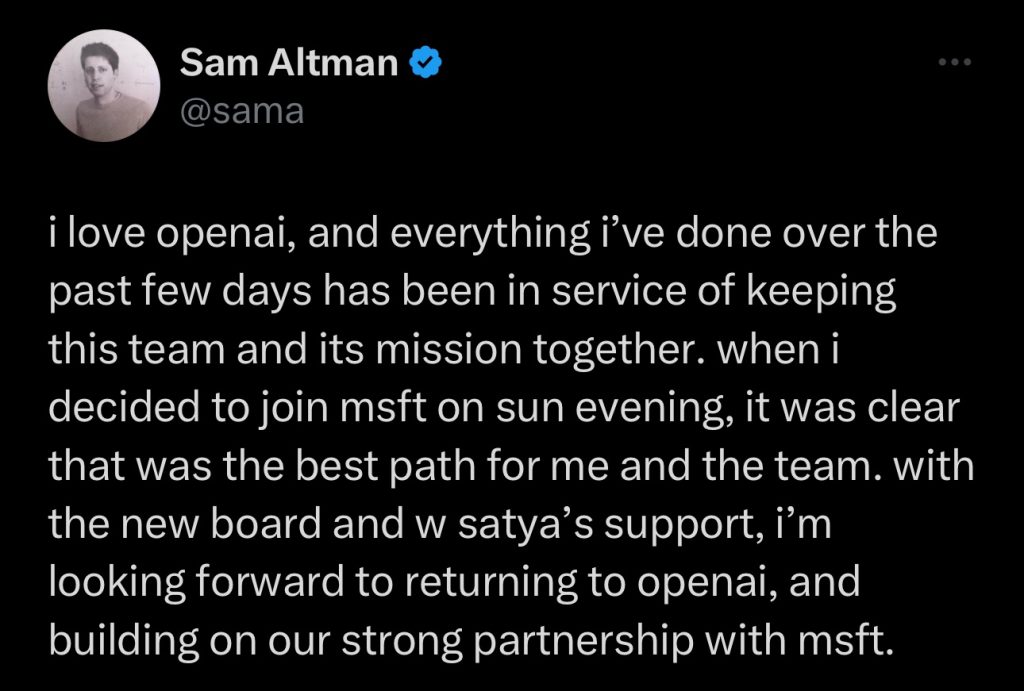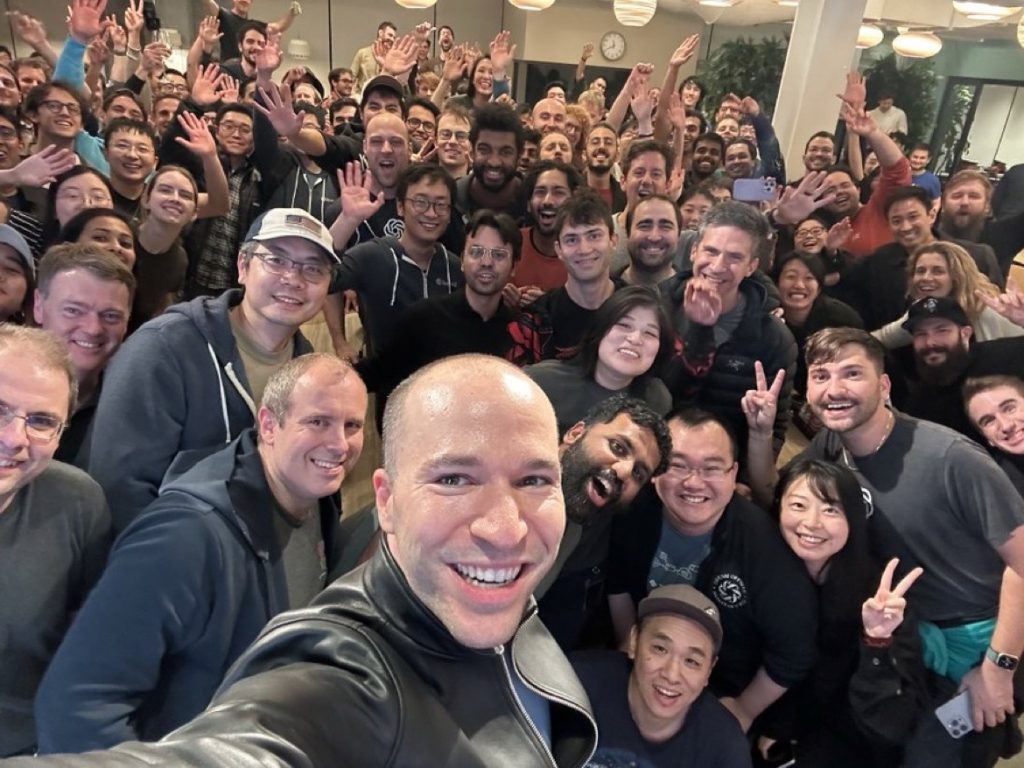In an extraordinary sequence of events that has riveted the technology sector, Sam Altman, the former leader of OpenAI, is set to make a stunning comeback to the very company that let him go less than a week ago. This resolution comes at the tail end of an intense internal dispute that exposed deep-seated tensions within the AI community about the ethical and safe development of artificial intelligence.
Just days after his dismissal, OpenAI, the San Francisco-based AI research lab known for its groundbreaking work in the field, has released a statement late Tuesday announcing a surprising reversal. “We have reached an agreement in principle for Sam Altman to return to OpenAI as CEO with a new initial board,” the statement read. This about-face brings Altman back into the fold, accompanied by a reconstructed board led by the accomplished Bret Taylor, former co-CEO of Salesforce and previous chair of Twitter’s board.
Leadership Shake-Up at OpenAI

This shake-up at the top echelons of OpenAI has been the source of much speculation and intrigue within the tech industry. The new board of directors has been reconstituted to include prominent figures such as Larry Summers, Adam D’Angelo—who retains his seat from the prior board to provide continuity—and Bret Taylor, who takes on the mantle of leadership as board chair.
The announcement signifies not only the reinstatement of Sam Altman but also the reinstatement of former president Greg Brockman, who had resigned in protest of Altman’s dismissal. The return of these two influential figures attests to their integral roles within the entity they helped create.
Microsoft’s Role and the Future of OpenAI’s Governance

The reformation comes with the backdrop of significant investment interest, most notably from tech giant Microsoft, which has pledged billions to the company and is keen on securing a position on the expanded board of directors. This interest was underscored during a recent press tour by Microsoft’s CEO, Satya Nadella, who emphasized the need to avoid any further “surprises” and ensure stable governance.
Negotiations have been ongoing to pave the way for a larger board, potentially hosting up to nine members, tasked with establishing long-term governance protocols for OpenAI. This initiative reflects the intricate balance between innovation and responsible stewardship in the rapidly evolving domain of artificial intelligence.
Investigations and Internal Dynamics
In the aftermath of this dramatic series of events, there remains an undercurrent of unresolved issues. Both sides of the power struggle have reportedly consented to an external investigation, likely to be conducted by an independent law firm. This inquiry aims to provide a transparent account of the circumstances that led to the high-profile ousting and subsequent reinstatement, suggesting that there may yet be more to be uncovered about the internal dynamics at OpenAI.
Altman and Brockman: A Reaffirmed Vision for OpenAI

Central to this denouement is the passion and dedication displayed by Altman and Brockman. Altman took to Twitter to express his commitment, stating that “everything I’ve done over the past few days has been in service of keeping this team and its mission together.” His decision to collaborate with Microsoft, he claims, was a strategic move in the best interests of OpenAI and its team.
The investor community, represented by entities like Thrive Capital, has lauded the resolution, anticipating a bright future for OpenAI under the reinstated leadership. Thrive partner Kelly Sims recognized the unparalleled potential of OpenAI, as well as the unique qualities of Altman and Brockman to lead and inspire.
A New Chapter for OpenAI

As the dust settles on this unexpected upheaval, OpenAI finds itself at the beginning of a new chapter—one that promises renewed leadership and a clarified direction for the company. Sam Altman’s return, defying the initial resolve of OpenAI’s board to see him removed, carries with it the dramatic flair of the tech world’s intricate power plays. This incident has also drawn global attention to the critical questions surrounding the governance and ethical considerations of AI development.
As OpenAI moves forward, the integration of new oversight measures and collaborative partnerships, notably with stakeholders like Microsoft, will be critical to its stability and innovative prowess. This fascinating saga serves as a reminder that even at the frontier of technology’s advancement, human factors and leadership decisions profoundly shape the trajectory of our collective future.



